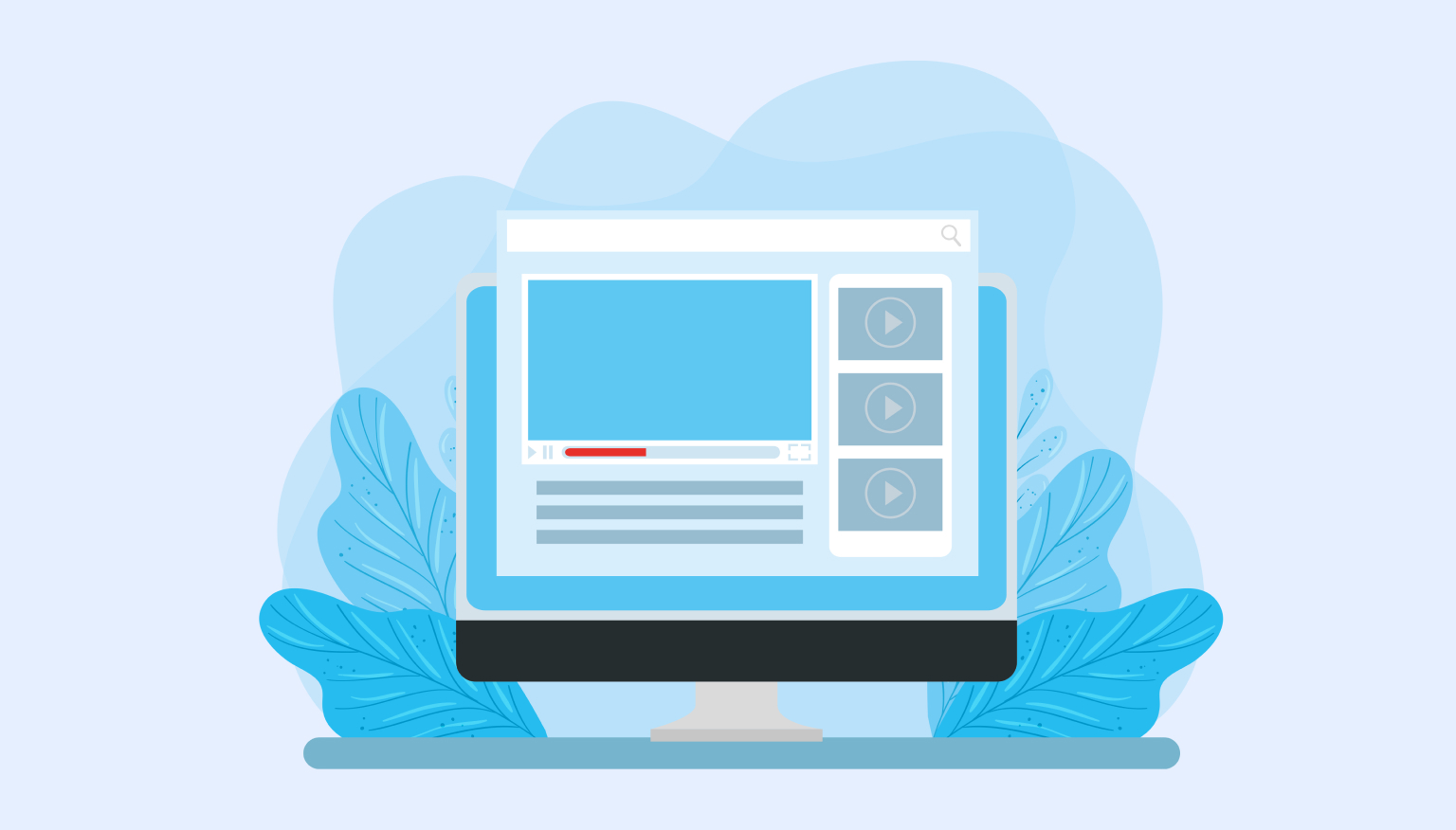How to make a site trustworthy? - 11 ideas
Sometimes it happens that, while browsing the web, we stumble upon a site that at first sight makes us distrustful. There's just something about it that doesn't convince us. So how do you make a site trustworthy? Read our proven tips on the subject.
Lack of clear contact information, incorrectly installed SSL certificate, misspelled text, fake images - all of these have a huge impact on our perception of many sites.
There are certainly more such criteria.
So, find out why it's good to have a reliable website. Here are twelve steps that will allow you to increase its level of trust in the eyes of your visitors.
What makes a site trustworthy? - 11 tips
1. Make your company data available
I think this is one of the most obvious things to keep in mind.
If someone visits your site, they will most likely want to contact you. Or at least that's the goal you set for your users.
Therefore, you should not "prevent" visitors from contacting you. The inverted commas here are not accidental, as many people don't realize that the inappropriate use of certain elements on websites discourages users from making contact:
- lack of easily accessible and visible contact details
Taking care of the above issues, among other things, helps to increase the level of trust in your site, and therefore in your company.
2. Integrate an SSL certificate into your website
SSL certificates have been used on websites for several years, but still few people know not only about their existence, but also about the benefits of using them.
The presence of SSL on the site is displayed as follows:

That is, the green sign "https" and a visible padlock.
What does SSL offer?
First of all, it provides encryption of transmitted data and is responsible for their integrity. In addition, SSL has a positive effect on the image of the website. This suggests that the site owner wanted to increase the level of security on the site.
By the way, I can recommend two of our archived texts:
- Switching from HTTP to HTTPS - checklist
- Differences between HTTP and HTTPS - which one to choose?
3. Make the site aesthetically appealing
If you want to have a reliable site, you must take care of its appearance.
It matters a lot because it tells users: "This company wanted to invest in a decent web designer."
Many (especially small) entrepreneurs approach the creation of company websites on the principle of "if only it were." I understand that in this case, the company car can be a jalopy, and the company premises - a dilapidated wreck.
"The way they see you is the way they write" - this proverb conveys the idea one hundred percent. It's about making your site look dignified, dignified and pleasing to the eye. Then users will feel that you are serious not only about your business, but also about them.
4. Use social proof
We mention social proof in many of our texts.Not in vain, because we know their value.
The role of social proof is to convince website visitors that this company is worth trusting.
Customer testimonials, celebrity images, boastful mentions in the media, highlighting impressive statistics - all this increases our level of trust.
We live in a society, so everything that is in any way socially "proven" or legitimate, inspires confidence in us.
So be sure to use social proof elements on your site.
5. Avoid complex industry jargon
The reliability of a website is also enhanced by how you communicate with its audience.
We all use industry language - some phrases that are clear to us and our colleagues. This happens regardless of the industry, since almost every field has its own jargon.
However, those who visit your site are not required to be fluent in your internal language.
Therefore, communicate with them in a clear and understandable manner. So that there is no doubt about the meaning of any words or phrases.
Otherwise, the recipient may feel awkward or even stupid. You don't want them to feel that way.
6. Beware of stock photos
Stock photos are photos that can be purchased from public sources.
After all, the artificiality in these photos reeks of artificiality from a mile away.
I don't want to say that all stock photos are bad - absolutely. Among them you can find some really useful images.
But - for heaven's sake - don't repeat the mistakes of many others.
Choose images that primarily fit the context of the places where they will be placed, but at the same time look as natural as possible and interact with the audience sincerely and naturally.
In my opinion, a much better effect can be achieved by using the services of a photographer who will take pictures of you, your office, colleagues, etc. in the right perspective. Such photos will certainly be much more interesting and natural.
7. Show visitors that your business is active online
The benefits of blogging are numerous.
From the SEO aspects to becoming an expert in a particular industry and building your footprint on the web. It is this last point that we will consider in more detail.
If the company's website is online, it does not mean that the company continues to operate. At first glance, it is difficult to assess the degree of activity of a particular company.
The aforementioned blog comes to our aid. If the latest articles are fairly "fresh" (for example, the last one was added a few days ago), then the situation is obvious to us.
However, blogging is not everything. Social networks, among other things, are also important. Also, by the scale of activity, for example, on Facebook or elsewhere, one can judge whether the company is flourishing.
8.Make sure that there are no errors in the texts
Do errors on the site have anything to do with trust in the site?
Of course, yes!
If I see that the site has interesting and error-free texts, I know that I have a reliable site in front of me.
Mistakes are not only a sign of sloppiness, they also negatively affect the perception of this site and, therefore, the company as a whole.
In the end, the site is a business card that should not have such obvious flaws as spelling errors in texts or clearly visible typos in important places.
9. Add an "About us" subpage
"About us", "Team" or "Crew" subpage "humanizes" the site in a sense.
It makes it more accessible to visitors by showing the "human face" of the company and introducing users to the people who make up its team.
This benefits the audience as they see the important aspect of personalization. After all, there is only one such team, and it works for this company. It consists of these people, not others, who look a certain way and go about their business. It's impossible to fake it.
In fact, it involves the disclosure of certain information to the public, but it is this gesture that makes the site trustworthy.
Of course, this is not a universal subpage and will not work in absolutely every case, but if your company is small, you should consider implementing it.
10. Show what brands your company works with
Are there any "big shots" among your clients?
Do you work with famous people in your industry?
If you answered "yes" to any of the questions above, consider asking them to provide their image (such as displaying their logo).
This is another element of social proof that has already been discussed. Its goal is to provoke the audience to think about the following questions: "Are they collaborating with them? - wow!".
The main thing is to make a good impression on visitors. The presence of famous people or brands on the site somehow legitimizes our positive, trusting perception of the site.
11. Make sure everything works as it should
Would you trust a site where:
- the image doesn't load,
- the contact form validation doesn't work properly,
- the link throws a 404 error,
- the script Does not work properly?
I would be skeptical about this.
And I would certainly think that the owner of such a site does not pay attention to details that, despite appearances, are important.
If someone makes technical mistakes on their own website, I doubt they can reliably take care of my business.
Therefore, be sure that your site works 100 percent correctly.
Why is it important to have a reliable website?
Because a site that responds to the needs of its visitors and in no way rejects them just works.
And if it works, then it justifies the hopes placed on it. It generates links, which can then be converted into queries with a little effort.
I hope I have convinced you that it is worth having a reliable website.
















